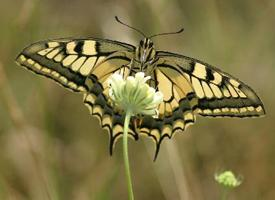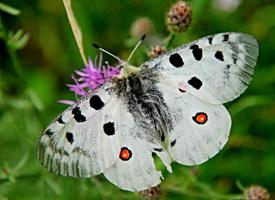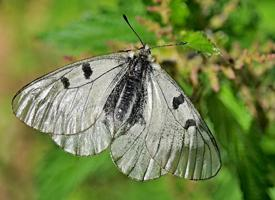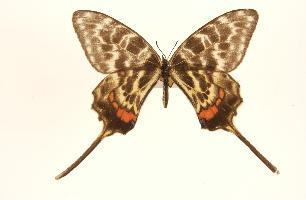
Váhy a míry
| Délka | 7 cm |
|---|
Popis zvířete
The Old World Swallowtail (Papilio machaon), a striking and widely recognized butterfly, is a member of the family Papilionidae, which comprises large and colorful butterflies commonly referred to as swallowtails. This species, distinguished by its beauty and elegance, has a broad geographical distribution, extending across the Palearctic region including Europe, Asia, and North America (in its subspecies form).Adults of the Old World Swallowtail boast a wingspan that typically ranges from 65 to 86 millimeters, making them not only one of the larger butterflies in their habitats but also among the most visually captivating. The primary coloration of their wings is a vibrant yellow, adorned with an array of black stripes that create a striking contrast. This pattern not only serves as a visual spectacle but also plays a crucial role in the butterfly's survival, aiding in camouflage and predator deterrence. The hindwings feature a distinctive tail-like extension, from which the name "swallowtail" is derived, and a series of blue and red eye-spots that enhance their intricate appearance.
The lifecycle of the Old World Swallowtail encompasses several stages, starting from egg to caterpillar (larva), pupa (chrysalis), and finally, the adult butterfly. Eggs are laid singly on the leaves of host plants, which predominantly include species from the Apiaceae family, such as fennel, dill, and carrot plants. The caterpillars are equally remarkable in appearance; their primary defense mechanism is mimicking bird droppings in the early stages and, later, displaying a vibrant green color with black bands and orange spots. A unique feature of the caterpillar is its osmeterium, an organ that can be everted to release a foul-smell as a deterrent against predators.
As the caterpillar matures, it forms a chrysalis, within which the transformation into an adult butterfly occurs—a process that fascinates many with its embodiment of nature's marvels in metamorphosis. The chrysalis phase varies in duration, influenced by environmental conditions, particularly temperature.
The Old World Swallowtail is a diurnal species, active during the day when it feeds on the nectar of a wide variety of flowers, showcasing a preference for those in open, sunny habitats. Their role as pollinators is crucial in the ecosystems they inhabit, contributing to the health and reproduction of many plant species.
Despite their beauty and ecological importance, Old World Swallowtails, like many other butterfly species, face threats from habitat loss, pesticide use, and climate change. Conservation efforts are vital to ensure their survival, emphasizing the importance of preserving natural habitats and promoting biodiversity.
In summary, the Old World Swallowtail (Papilio machaon) is a remarkable butterfly, celebrated for its stunning appearance and ecological role. Its lifecycle, from the uniquely adapted caterpillar to the majestic adult, is a testament to the complexity and beauty of nature. As a subject of admiration and study, this species continues to captivate and inspire, reminding us of the intricate interconnections within the natural world.
Podobná zvířata
Nové fotografie zvířat
Top 10 zvířat
- Chinese water dragon (Physignathus cocincinus)
- Galápagos tortoise (Geochelone nigra complex)
- Dolphin gull (Leucophaeus scoresbii)
- Japanese macaque (Macaca fuscata)
- Colombian red howler (Alouatta seniculus)
- Sea urchins (Echinoidea)
- Moustached guenon (Cercopithecus cephus)
- Diana monkey (Cercopithecus diana)
- Common reed warbler (Acrocephalus scirpaceus)
- Common house mosquito (Culex pipiens)


